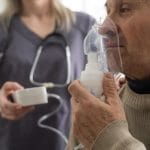When you walk down the baby aisle at any store, the colorful packaging and smiling infants on labels create an impression of safety and care. However, some materials commonly found in baby products are actually dangerous. Learn what some of the top offenders are below so you can make smart, safe purchases for your little one or the baby of a friend.
Lead Paint and Coatings
Lead remains one of the most serious threats in baby products, despite regulations that have been in place for decades. This toxic metal can appear in painted toys, cribs, and decorative items manufactured overseas or in older products that predate current safety standards.
Lead exposure damages developing brains and nervous systems, potentially causing learning disabilities, behavioral problems, and developmental delays. The CDC states that no level of lead exposure is considered safe for children.
You’ll find lead most commonly in these products:
- imported toys with bright, glossy paint
- vintage or hand-me-down cribs and furniture
- costume jewelry designed for children
- art supplies like crayons and paint sets
Phthalates in Plastic Products
Phthalates are chemical compounds that make plastics soft and flexible. Manufacturers add them to everything from teething toys to bath books, but these chemicals disrupt hormones and may affect reproductive development.
Research links phthalate exposure to asthma, allergies, and behavioral issues in children. Babies face particularly high exposure because they put everything in their mouths, and phthalates easily leach from plastic materials.
Here are some common sources:
- soft plastic teethers and bath toys
- vinyl bibs and changing mats
- plastic bottles and sippy cups (older models)
- inflatable toys and pool floats
Formaldehyde in Textiles and Furniture
Formaldehyde appears in many baby products as a preservative and adhesive component. This colorless gas irritates the eyes, nose, and throat, and the American Cancer Society classifies it as a human carcinogen.
Baby mattresses, clothing, and blankets often contain formaldehyde-based finishes that create wrinkle resistance or prevent bacterial growth. When choosing a security blanket or other textile items, look for synthetic products that are certified baby-safe or feature natural, organic fibers.
Products that commonly contain formaldehyde are as follows:
- crib mattresses and foam padding
- permanent-press clothing and bedding
- composite wood furniture and shelving
- carpets and rugs in nurseries
Flame Retardants in Upholstery and Electronics
Flame-retardant chemicals prevent or slow the spread of fire, but many types used in consumer products accumulate in dust and air. These chemicals disrupt thyroid function and may affect brain development in infants and young children.
Manufacturers add flame retardants to car seats, high chairs, nursing pillows, and electronic toys. The chemicals migrate from products into household dust, which babies ingest when they crawl and put their hands in their mouths.
You might encounter flame retardants in these things:
- polyurethane foam in car seats and strollers
- electronic toys with batteries
- upholstered furniture and nursing chairs
- some types of baby carriers and sleep positioners
How To Buy Products Safely
Now that you know about the materials that are dangerous in baby products, you can do your best to avoid them. Read labels carefully, looking for products that specifically state they’re free from lead, phthalates, formaldehyde, and flame retardants. Additionally, choose natural materials when possible—solid wood toys, organic cotton clothing, and natural rubber pacifiers typically contain fewer synthetic chemicals. For unavoidable plastic items, select those marked with recycling codes 1, 2, 4, or 5, which are less likely to contain harmful additives.







